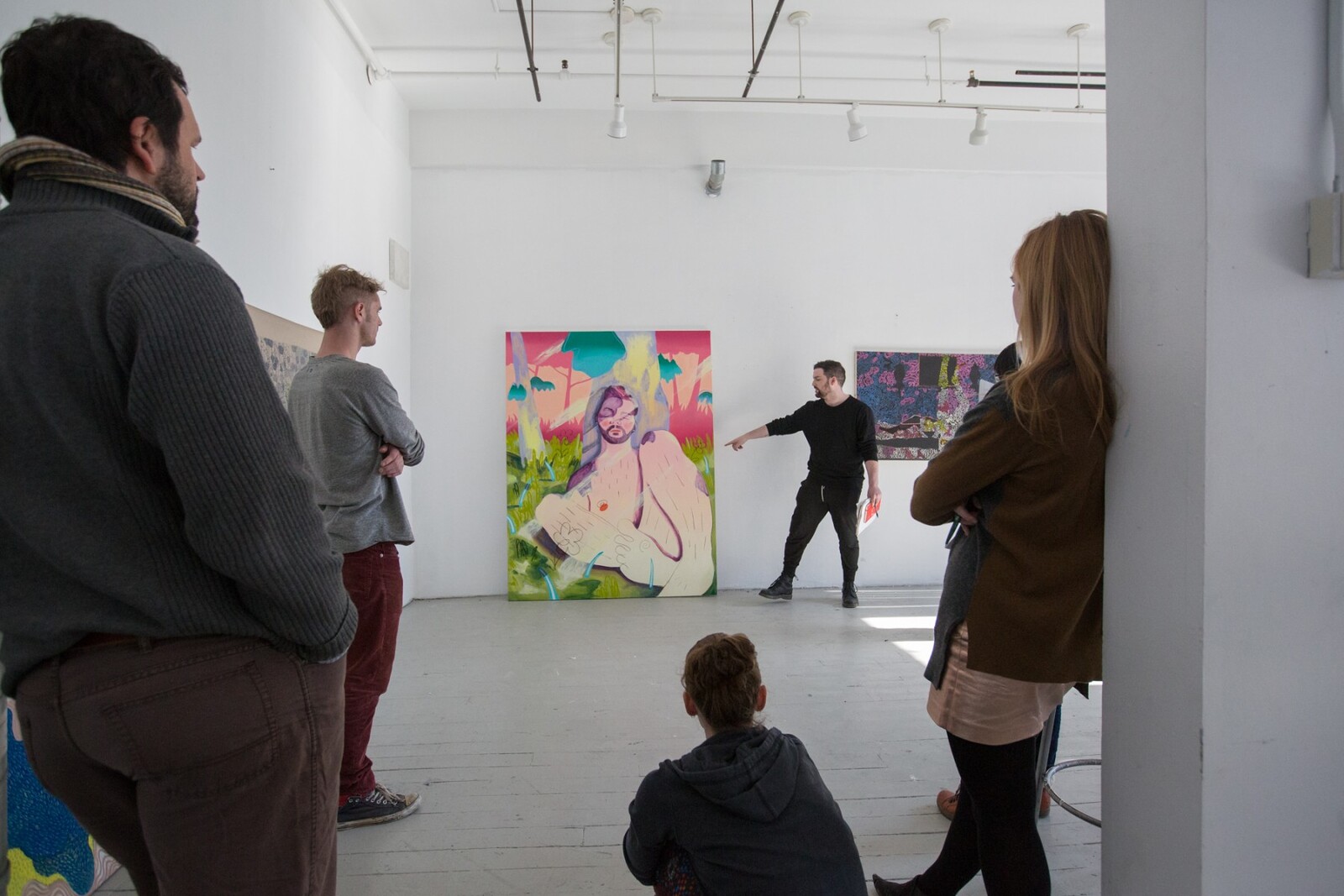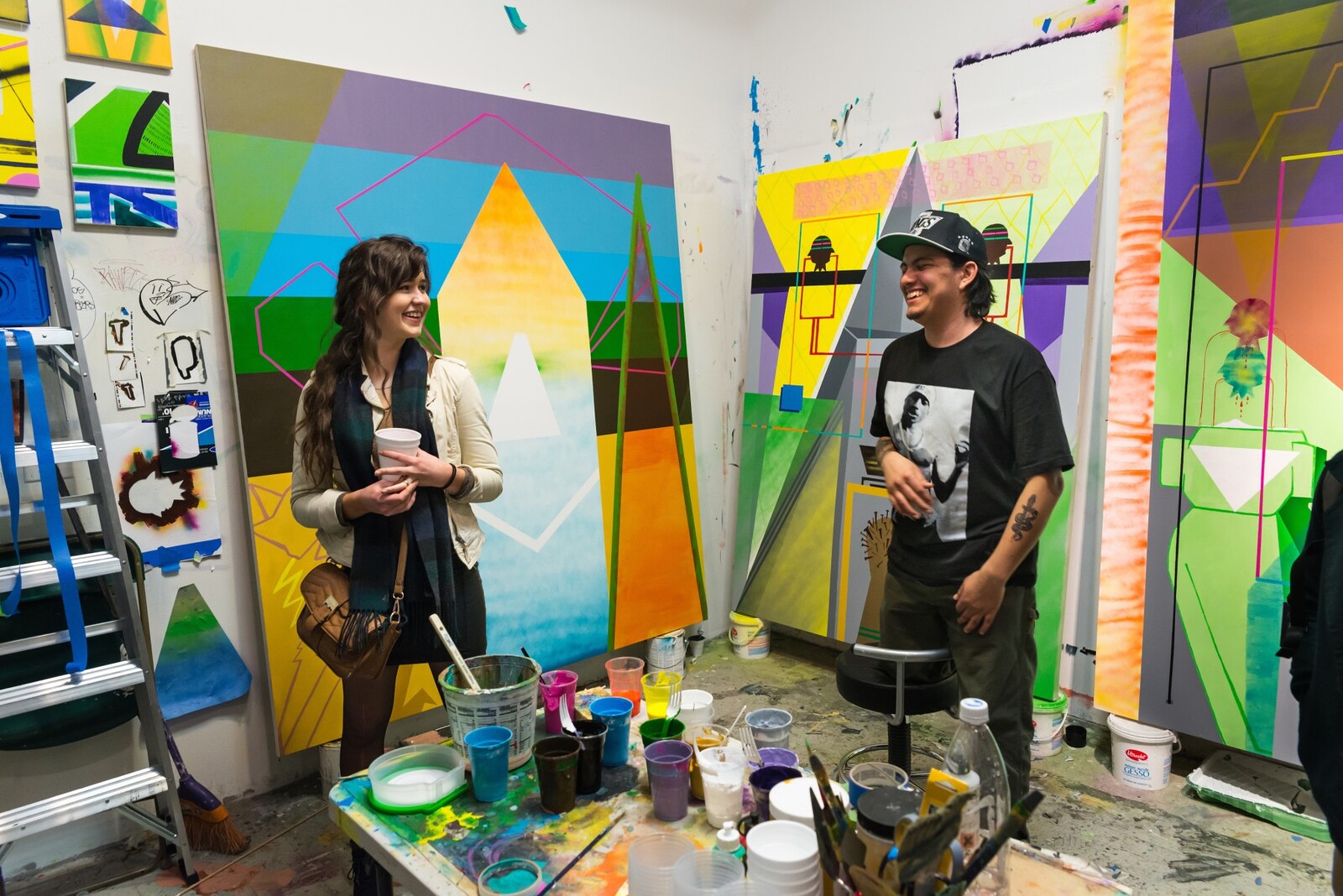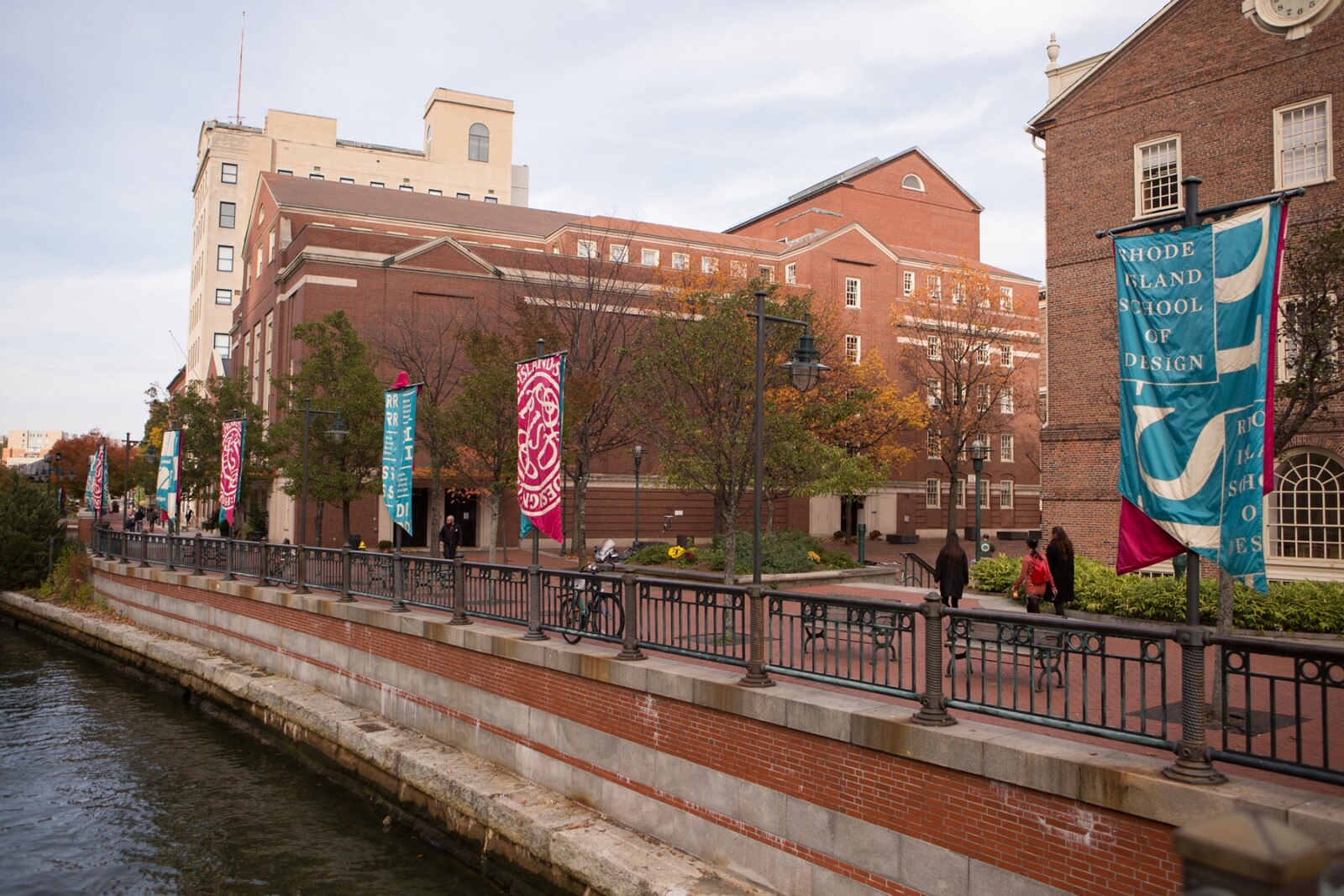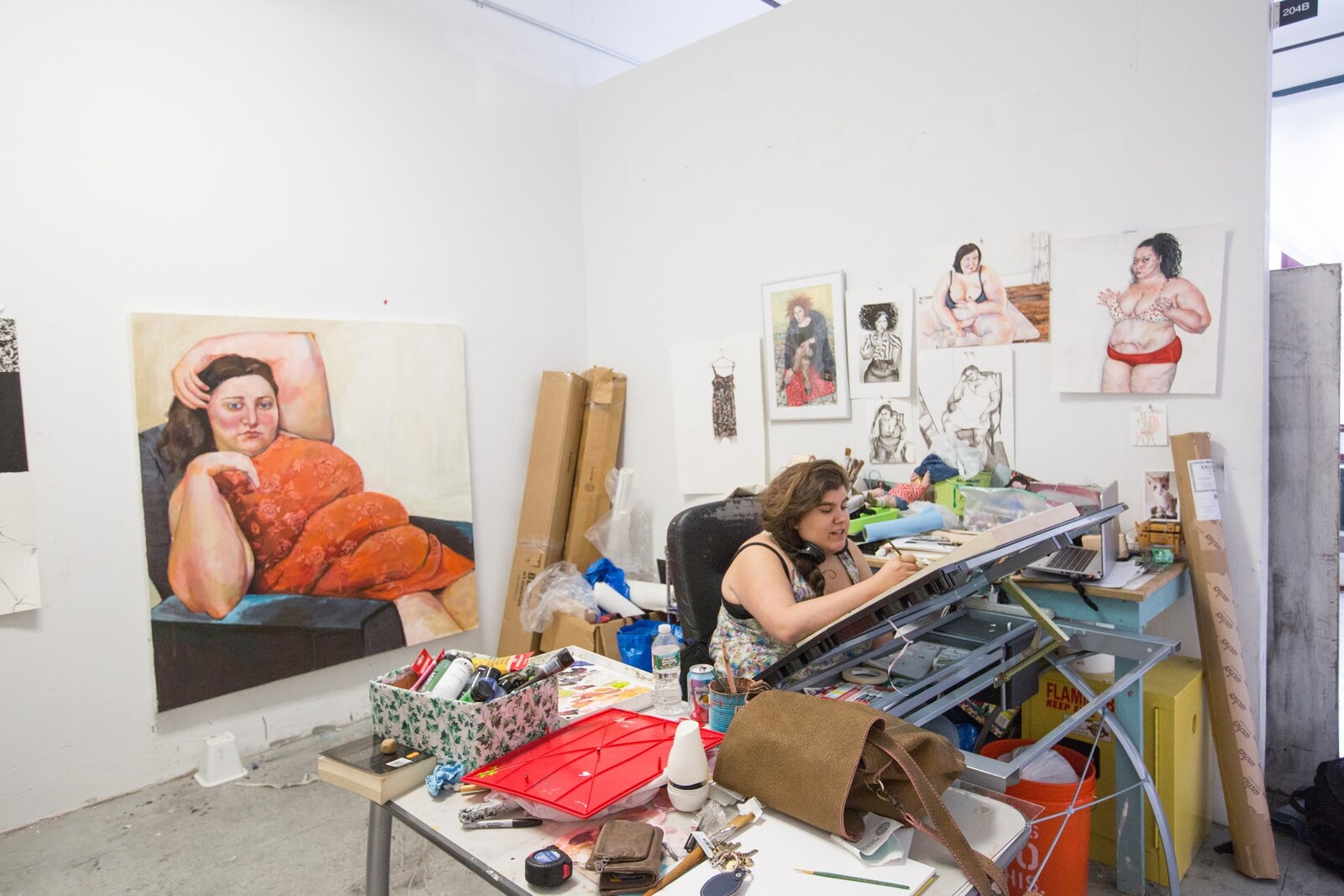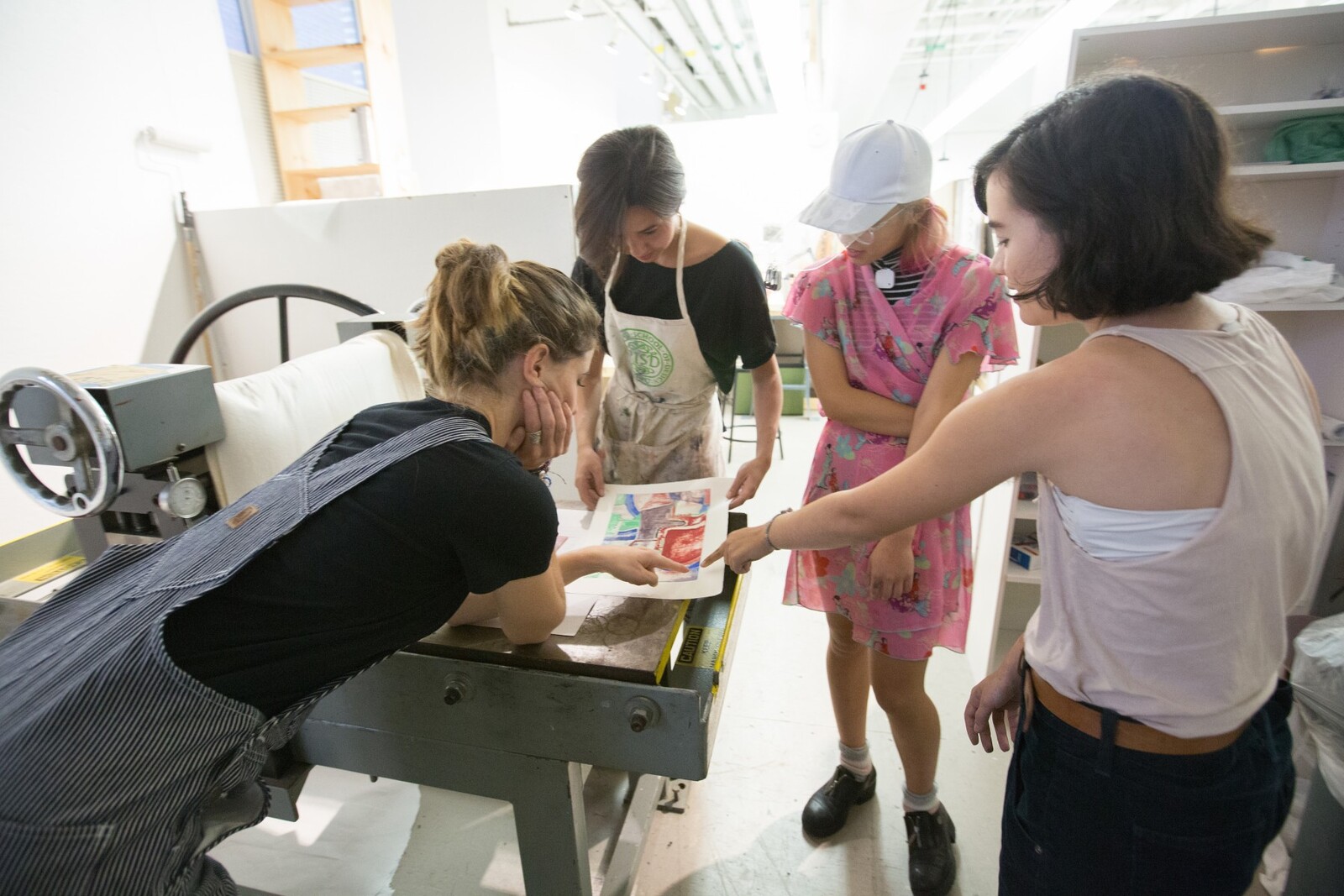When I was an undergrad in RISD’s painting program in 2006, my TA, a second-year MFA student, insisted that she would never begin a painting until she had applied, sanded, more finely sanded, and reapplied her ground at least fifteen times if not twenty or more, each time sanding the thickening layers of gesso or rabbit skin glue with finer sandpaper until her canvas surface resembled a shellacked whiteboard. She told us she would prepare several canvases at a time, assembly-line style, sanding and gessoing one after the next, again and again. My classmates (class of 2009) and I were admiringly familiar with the MFA students: we saw them as rigorously focused and possessing a borderline-obsessive knowledge about the craft of painting—best studio practice, the right ways to use mediums, archival methods, and so on. They were our TAs and taught our electives during Wintersession, RISD’s version of January term (or “J-term”); they got special, better on-campus housing and larger, brighter studios; most of the time they had the run of RISD’s then newly built Gelman Gallery in the RISD Museum; and, or at least we imagined, they amply frequented Tillinghast Farm—the bucolic, rural pasture that RISD owns in Barrington, RI, but is rarely accessible to undergrads (I went there once). We knew there were just ten painting grad students each year, compared to the rambling forty-plus headcount of a given undergraduate class in the department; the sheer tightness of the grad student population gave them a rarified quality, the Tamaraw water buffalo of the school. As TAs, they offered pointed criticism; amid a BFA program that encouraged students to explore conceptual and performance practice (for one classmate’s senior thesis, our entire class played a game of spin the bottle), a graduate TA would often be more likely to contribute nuanced formal suggestions. Returning to RISD, this time to research the MFA program for this piece, I found this observation about the MFA students—and their predilection for a rigorous formal practice—to still be the case. One grad student I spoke with described his experience of the program as one that “really cultivat[es] the maker” (Danny Ferrell, MFA student, class of 2016).
Within RISD, there seems to be an unofficial understanding of an internal division between the design and fine art programs. The school is well regarded for its exceptional graphic design, industrial design, furniture, and architecture programs, among others; and indeed the university was founded, in 1877, amid the Arts and Crafts movement to produce skilled craftsmen and trained artists. (The Rhode Island Women’s Centennial Commission, made up of daughters of titans of industry, founded the school with surplus funds left over from a party celebrating the first Centennial of the United States in 1876; supposedly, a proposed alternative use of the funds was for a public drinking fountain.) Painting, printmaking, ceramics, sculpture, textiles, photography, film/animation/video, Jewelry + Metalsmithing, and glass are among the MFA (and BFA) programs lumped under the “fine art” umbrella, but the painting program stands out to me as the only one to embody a broader sense of art-making that dips comfortably into a variety of practices, and could perhaps more accurately be called RISD’s “art department.” While the others focus more specifically on mastering a particular craft and skill set, students in painting learn the more (or less, depending on the context) commercial role of the working artist competing within the ever-growing and ever-competitive art business landscape.
Approximately three hundred students apply to the Painting MFA program each year. Thirty to forty are invited to interview, and exactly ten are admitted and enrolled. All of the program’s full-time faculty—some seven to eight permanent staff members—are involved in the process, each reviewing sets of slides and putting forth their top picks, which are then doubly vetted in subsequent rounds. The faculty all interview prospective students together as a panel (with some ducking out where teaching schedules conflict), interrogating each applicant, tribunal-style, for thirty to forty minutes. The interview aims to determine a prospective student’s ability to articulate his or her work and to engage in a critical discussion. Second-year students also have a minor say in the final selection; they are shown slides of applicants’ artwork and invited to vote on their incoming classmates. (This student vote holds little weight compared to the staff opinions, but can help to tip the scale.)
With such small class sizes, the rigorous application process privileges top students that will also contribute to a diverse pool of backgrounds and dynamic group chemistry. “One of my colleagues told an applicant in an interview a few years ago, ‘we don’t teach curiosity at RISD,’” says newly appointed Graduate Program Director Kevin Zucker. “I think that really speaks to what we’re looking for—artists who are already into whatever it is they’re into, who don’t need hand-holding in conceiving of a meaningful project that they’re deeply invested in, but who do want help shaping their practices into better investigatory tools … I also think we attract long-haul, slow-burn types, people who know that looking awesome in their thesis show isn’t necessarily the best gauge of how they’re going to be doing in five or fifteen years.”
All faculty are working artists and most have long ties to the school; over the past decade alone a small handful of professors have rotated in and out of—and, in some cases back into—leadership roles. Zucker appreciates the relatively swift rate of turnover at senior administrative levels: “The idea is that neither the grad nor undergrad programs should be allowed to become anyone’s fiefdom. We operate by consensus, and do so remarkably well—one of the benefits of being a very small program.” For example, David Frazer, also newly (re)appointed as department head (which presides over the graduate and undergraduate painting programs), previously held the title in the early 2000s. Frazer has taught in both the undergraduate and graduate painting programs for nearly forty years. A working artist himself, he describes the primary criteria for RISD painting faculty as such: “They must have a strong exhibition record, and they have to be really good teachers and really good artists.” Recent graduate Michael León, MFA class of ’15, recalls the guidance he received from Dike Blair, another longtime professor (and artist in the Gagosian stable): “He was really invested, he really cared, and he felt very responsible for [our development]. He would always stop into my studio and say, ‘check out this artist,’ and I noticed that for every student he always suggested great artists and works to reference. He’d say, ‘I thought of you when I saw this show in Chelsea.’ He was always really helpful.”
Graduate Program Director Kevin Zucker is also a New York-based artist. He received his BFA from RISD in 2000 and his MFA from Columbia in 2002. Part of a generation whose college years corresponded with the rapid emergence of the internet, and then social media—at thirty-nine, he is perhaps the program’s youngest director yet—Zucker uses a variety of multimedia tools and influences in his own painting practice. In a 2011 interview in BOMB, he described the ever-expanding meaning of painting to him amid this landscape: “Painting is also a technology for visualizing things that you couldn’t otherwise, whether they’re fact or fiction, abstraction, the properties of materials, poetic idiosyncrasies, utopian plans, dystopian critique of those plans, whatever. The computer can be used the same way, 3-D modeling software gets called ‘visualization’ software. And then of course that attempt at description, the limitations of the tools, reshapes the ideas being described and the ways they make meaning, and so on, right?” It is too soon to tell if or how Zucker’s influence will ultimately shape the department during his tenure at its helm, but his appointment as director may nevertheless indicate an intention to reconsider the intellectual focus of the painting program.
As is stands now, the program’s curriculum is rather methodical. In addition to the required studio critique and graduate seminar courses, first-year painting students must attend a graduate drawing course, as well as a printmaking course in RISD’s printmaking department. Other electives become available beginning second semester (with Wintersession), offering a variety of elective and teaching opportunities. Painting MFA students are all granted teaching assistantships (one to two per semester TA at Brown, RISD’s cohabitant on Providence’s College Hill; the rest will remain in the painting department). Only second-year students may apply to design classes and conduct their own Wintersession courses. Electives include special classes within the painting department—such as a curating class currently taught by Yasmil Raymond that is also open to undergrads—but more often they are an opportunity to attend classes in departments such as ceramics, glass, sculpture, printmaking, film/animation/video, and so on. The curriculum also offers a variety of non-studio options: all RISD grad students are encouraged to enroll in the diverse Grad Studies seminars, which are offered without prerequisite; course titles range from “Public Art: History, Theory and Practice,” “Ethics of Humanitarian Design,” and “Art and Design Practicum: Work, Money, Love,” to “Time / Technics / Media.” The grad students also have access to RISD’s roster of undergraduate liberal arts classes and, of course, Brown University, with which it enjoys a heavily reciprocal relationship.
“Cultivating the Maker”
Pedagogically, the painting department has historically promoted reverence for painting as a pure art form in itself, professing a gospel that eulogizes craftsmanship, composition, and visual and spatial harmony as both cornerstones to successful art-making and greater goals. Critique in the program often firstly addresses these points; the concept behind a work is often discussed to establish context—rather than being of preeminent value and supported by an artwork’s formal qualities, it is a vehicle to help inform the visual direction a piece may take. While this approach strikingly contrasts with many other MFA programs that more heavily stress theory, at its core is seemingly an altruistic ethos placing a stern onus on the artist to lift the heaviest intellectual load, creating work that “speaks for itself,” according to recent grad León, who added: “I don’t think it’s necessarily formal. It’s a good balance between formal concerns, and context and concept. What they ask of us is to be less selfish and give more to the viewer, to make something that’s intelligent. Not something that’s so highly theoretical that you’ll only understand if you went to art school. It’s more humble in that sense.”
Danny Ferrell, a second-year MFA student, shared this sentiment: “[The MFA Program] doesn’t subscribe to the idea that you have to kill the maker to cultivate the thinker. Many schools stress the theory, rendering object-/image-making as secondary or tertiary. RISD absolutely stresses content: How do these images represent the issues you present in your work? How is this work situated in history? Does this work have a place in a contemporary context?” León added that the program’s emphasis on craft also creates a pressure to produce: “Where other programs are more conceptual, [RISD] is looking for students who not only make strong work, but also can make a lot of it … You review your art in the middle of the semester, so all the work you see then has been made within just two to three months. [The students] produce; they make.”
Wary of claims that RISD’s approach to making is what differentiates the school from other top MFA programs, Zucker argues that the school’s identity is as much a product of marketing as it is good teaching: “It seems to me that ‘theory’ and ‘practice’ in these conversations tend to be more about branding and attitude,” he says. “For instance, RISD’s promotional materials use the word ‘making’ a lot; there’s some kind of desire on the part of the institution to understand itself as a practice school. I’m skeptical of that marketing in the same way that I’m skeptical of the idea that Columbia was or is particularly theory-oriented”—here he is responding to a question specifically comparing the two schools for reference. “I think RISD’s program, at least as it is now, and Columbia’s actually break down along similar lines as far as that balance goes. Any good program is going to be about helping artists fuse approaches to research, contemplation, production, and critique into some kind of dynamic but unified whole that will sustain them as artists for a long time.”
The Midterm Critique
Early this past April, RISD’s current first- and second-year MFA painting students gathered in the school’s Fletcher building for their second full group critique of the 2014–15 academic year. In thirty-five-minute intervals, the group herded back and forth between two large classrooms, with students alternately installing and de-installing their work in whichever room was not currently used, fully transforming it into their private exhibition space. The midterm critique is the only time each semester that the full group of twenty (first- and second-year students together) meet for an in-person critique; the rest of the time, they meet in smaller groups or individually with their professors. Final reviews are presided over in mid-May by visiting critics—such as Lynne Tillman, Joe Bradley, and Martha Schwendener, who are assigned to each student and coincide with the exhibition of their work in RISD’s school-wide Graduate Thesis Show, which has for the past several years taken over the Providence Convention Center at the end of May.
During the midterm critique, the student presenting speaks just a few words about their work and then the faculty take over, occasionally engaging the student with direct questions. The other students sit silently for the majority of the critique, some chiming in with their own comments during the final few minutes of the allotted time. The whole process takes two days and a morning, with the first critique of each day beginning at 8 a.m. and the final ending in the evening. All of the faculty attend when able, with some stepping out to teach undergraduate classes, while a few who commute only join on one day or another. Each has his or her own style of critique, and professor Roger White (who also teaches a thesis writing class for MFA students) astutely describes several in his 2015 book The Contemporaries: Travels in the 21st-Century Art World, in a chapter about a prior critique at the RISD MFA program: “They function like an ensemble cast. Holly Hughes … gruff, good-natured, with whorls of auburn hair pinned back in a bun. Chris Ho, a stylish and animated young critic. David Frazer, a senior professor, white-bearded and avuncular, affably combative. Kevin Zucker, [then] an associate professor and the youngest full-time member of the faculty, thin and quick-witted, with chunky glasses … Dike Blair, a soft-spoken senior critic, in charcoal shirt and dark jeans, and Duane Slick, the director of graduate studies, in black jacket and jeans, who reserves most of his commentary for pivotal moments in the critiques.” In addition to the cast that White describes, also present this past April was Brooklyn-based painter Craig Taylor, who often drew poignant social connections in his remarks with a side-eye on contemporary culture (reflecting on one student’s work showing disparately rendered office buildings: “You think of that new building in Cooper Square, and it’s like who wants to live inside a grand piano?”).
The criticism encourages improvement and deeper introspection, thoughtfully guiding students and rigorously dissecting their work. While some students exclusively showed flat works on paper or canvas, others displayed sculptural pieces that ranged from a series of Sottsass-like wood assemblages to an arresting life-size corn husk doll (shown alongside other human-scale figures and cutouts in various mediums). For his midterm critique, León showed a series of paintings, sculptural pieces, and a video installation. He briefly described the paintings, which depict figurative, dream-like images that he described as symbolic and direct representations—a noted departure from the psychedelic abstractions dominating the majority of his prior other paintings. In the center of the room he had placed totemic ceramic pieces atop two stacked rugs that he designed and outsourced for production; to the right of this assemblage, a video played on a small grey monitor stacked over a bulbous, crudely composed structure of burlap, twine, and bits of wood and cloth; headphones played a track designed by León. The faculty in the room puzzled a bit over the placement of the items; they admired the rugs, but were curious about both the decision to stack them beneath other objects and the choice of objects themselves. They argued that the figurative representation in León’s paintings resulted in less harmonious compositions than his usual abstractions, suggesting that a here-and-there painterly quality distracted from the overall content.
León, whose work is steeped in his personal history and Mexican heritage, explained the significance of the images and the symbolism they embody to the class, and later in an email: “My work begins with personal stories that then mutate into fiction. As the narratives unfold I find relationships and connections amongst both past and contemporary historical events … Mesoamerican myths, anthropophagy, death, sacrifice, and metaphysics have been prominent in my work’s process and concept.” While his paintings still incorporate elaborate historical references and stagings, León does believe that the criticism he received at RISD had a clarifying effect on his work: “One [piece of] helpful criticism I received was that my work was at first very cryptic and at times difficult to enter, due to its heavy use of symbols and much more abstract quality—not just theoretically, but visually. This criticism encouraged me to be much more generous to the viewer,” he says, reiterating his sentiment from our prior conversation. “It really made me think about putting more at stake in terms of the image, and made me return to the figure and installation as a method of helping the viewer get a better view of the whole story.”
If any MFA program tends to evoke a communal identity and atmosphere, two years among the tightly knit, carefully culled group at RISD also seems to finely chisel out a certain type of artist: one with a burning work ethic, a deep pride for one’s craft, and an unpretentious respect for the value of thoughtful production.
—Anne Prentnieks
